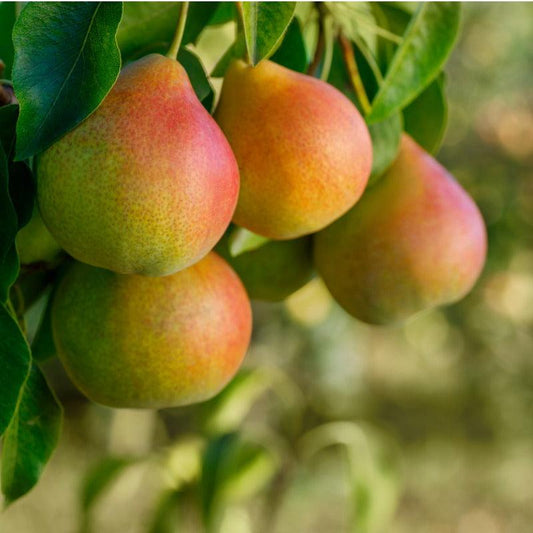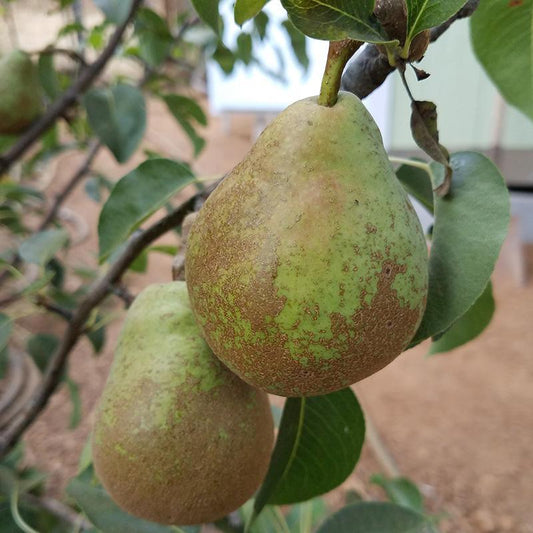Pear trees (Pyrus spp.) are medium sized, deciduous fruit trees ideal for home orchards and landscapes. Whether you're buying a pear tree for fresh eating or ornamental purposes, our selection of bare root pear trees includes both Asian pear trees and European pear Pyrus communis varieties.
These trees thrive in full sun, prefer well-draining soil, and begin to produce fruit within 3 to 5 years. With proper care, a single pear tree can yield abundant harvests for decades.
Choosing the Right Pear Tree
When selecting a pear tree for sale, consider:
Explore this guide to pear tree varieties to compare Asian pear trees and European pear Pyrus communis varieties for your climate and garden goals.
Planting and Growing Pear Trees
Plant bare root pear trees in early spring. Dig a hole twice as wide as the root ball, keeping the root collar just above ground level. Water deeply and mulch to retain moisture.
Good air circulation helps prevent disease, and choosing cold hardy varieties ensures success in cooler regions. Learn more about the life cycle of an Asian pear tree to support your tree at every stage of the growing season.
Care and Maintenance
Annual pruning is essential to promote healthy growth and maximize fruiting. Always prune pear trees during winter dormancy. Follow this step-by-step pruning video for proper technique.
To prevent issues like fire blight, select resistant cultivars and inspect trees regularly. Use organic practices outlined in our fire blight prevention guide.
Fruit Production and Harvest
Blossoms appear in spring, and most varieties produce fruit by late summer through early fall. For best results, harvest pears while still firm and allow them to ripen off the tree. See our pear harvesting guide for timing tips.
Popular Pear Varieties Include:
-
Bartlett – Classic flavor for eating and canning
-
D’Anjou – Firm, mild, and great for baking
-
Bosc – Densely textured and pear shaped with russeted skin
-
Comice – Rich, buttery texture for fresh eating
-
Hosui and Shinseiki – Crisp Asian pear trees with long shelf life
Why Buy Bare Root Pear Trees From Us?
We offer high quality, organically grown bare root pear trees with well-developed root systems for easy transplanting. Our sized trees are suitable for small gardens or larger orchards, and many are grafted for increased yield and disease resistance.
Whether you're planting a classic Bartlett, a Bradford pear for ornamental use, or establishing a diverse orchard with multiple pear varieties for cross pollination, you'll find the ideal pear tree for you at GrowOrganic.
Start growing pear trees today — shop our full selection of bare root pear trees and enjoy a productive, beautiful landscape for years to come.
 Sold out
Sold out Sold out
Sold out Sold out
Sold out Sold out
Sold out Sold out
Sold out Sold out
Sold out Sold out
Sold out Sold out
Sold out Sold out
Sold out Sold out
Sold out Sold out
Sold out Sold out
Sold out Sold out
Sold out Sold out
Sold out Sold out
Sold out Sold out
Sold out





















